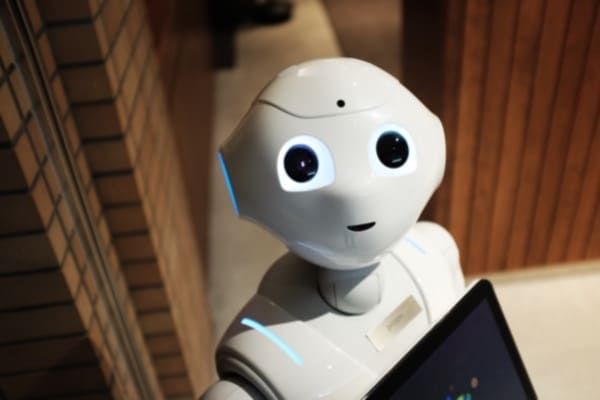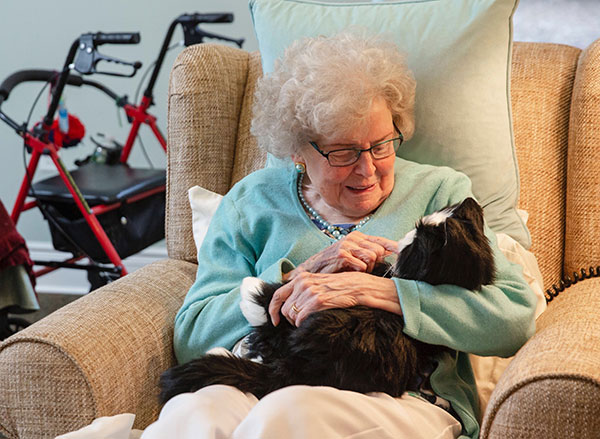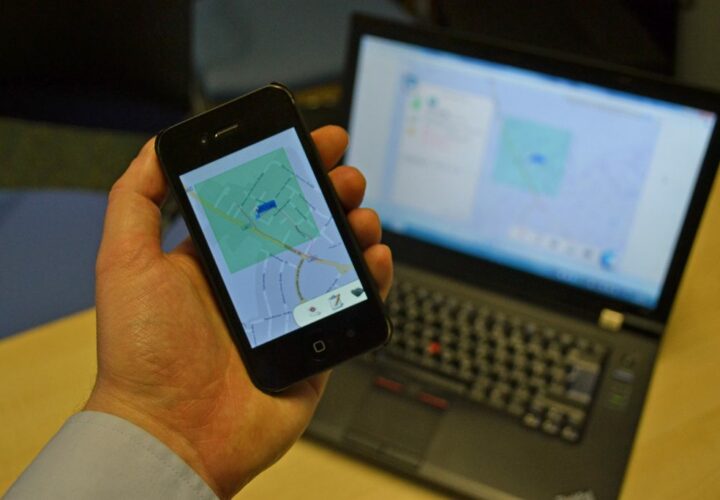A $2.8M grant awarded to scientists at the University of New Hampshire will help develop assistive care robots that will help caregivers with burdensome tasks.
It is the year 2022, and a robot from the not-so-distant future has traveled back in time. Unlike Arnold Schwarzenegger’s Terminator, the robot does not have the benefit of phone books in phone booths. Instead, the robot relies on a trusty Google search to find who he’s looking for: Sarah Connor. The robot is here to help Connor care for her ailing grandmother.
While time travel remains far-fetched, assistive robots and companions are indeed on the way to help people with dementia and their caregivers.
Researchers at the University of New Hampshire were recently awarded a $2.8 million grant from the National Institutes of Health to continue the development and testing of their caregiver robots. The goal is to feed the robot information from other smart home devices including motion-capture sensors, as well as wearable devices. It can remind a patient to take their medicine, monitor them for falls, and seek help from a human caregiver if a patient isn’t responding.
“Caring for aging adults, especially those dealing with progressive Alzheimer’s and dementia, can place a high burden on family caregivers who cannot be with their care recipients 24/7,” said Sajay Arthanat, professor of occupational therapy at the University of New Hampshire.
Caregivers are at a high risk of developing a variety of health problems — burnout, depression, and cognitive decline. Arthanat added that assistive care robots will support caregivers, ideally alleviating their burden will also help caregivers: “The ultimate goal of this research is to help support those caregivers while keeping their family members healthy, and active at home.”
These robots, however, will not replace human caregivers altogether.
“The robots are meant to complement the caregiving and support family caregivers in specific tasks that they feel burdened with,” Arthanat added, emphasizing that caregivers will still play an important role.
In the next few years, the team will research what types of tasks these assistive robots can do effectively.
He hopes that within a decade, the assistive robots could be commercialized, anticipating it will be affordable for the average household.
“To help defray the cost, we think that the units could also be leased and installed by home health technology providers in the future,” Arthanat said.
These robotic devices aren’t without risk: Data privacy and security will be a major concern, Sajay anticipates. “The care protocols with health and safety monitoring could be customized to the caregiver’s and care recipient’s preference for privacy,” he said.
Robotic caregivers: Not so futuristic after all
Robots that can monitor mood, prevent falls and ensure people don’t forget to take their medication aren’t here yet. But some companies have already commercialized robotic companions for people with dementia.
During the COVID-19 pandemic, robotic dog and cat companions provided otherwise isolated elderly people with company. These robotic pets can soothe irritability and apathy in people with dementia without requiring all the attention of a live animal (and don’t require anyone to pick up poop after them).
According to Claudia Rebola, a researcher and professor at the University of Cincinnati, a yet-to-be-published six-month study of 20 individuals assessed older adults’ relationship to robotic pets. Rebola told Being Patient that the preliminary observations show that the older adults in assisted and affordable living are welcoming the robots as companions. While these robotic pets provide companionship, they aren’t able to take on other caregiving duties.
Meanwhile, Japanese researchers are developing robotic nurses, though they are still years away. Computer science professor Dorothy Monekosso at Durham University believes that smart homes involving a variety of sensors and devices (including robots) will be the future of independent living for people with dementia, lightening the load for caregivers.





